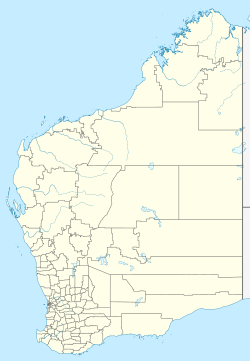| South Hedland Port Hedland, Western Australia | |||||||||
|---|---|---|---|---|---|---|---|---|---|
 Wanangkura Stadium in South Hedland in July 2023 | |||||||||
 | |||||||||
| Coordinates | 20°24′00″S118°37′00″E / 20.40000°S 118.61667°E | ||||||||
| Population | 11,046 (SAL 2021) [1] | ||||||||
| Established | 1970s | ||||||||
| Postcode(s) | 6722 | ||||||||
| Elevation | 7 m (23 ft) | ||||||||
| Area | 22.3 km2 (8.6 sq mi) | ||||||||
| Location |
| ||||||||
| LGA(s) | Town of Port Hedland | ||||||||
| State electorate(s) | Pilbara | ||||||||
| Federal division(s) | Durack | ||||||||
| |||||||||
South Hedland (or Port Hedland City Centre) is a suburb of the Town of Port Hedland, in the Pilbara region in north-western Western Australia. It is the CBD of the Town of Port Hedland and is the Port Hedland Town Centre. It can be reached by the North West Coastal Highway and Great Northern Highway. It contains Hedland Senior High School.
